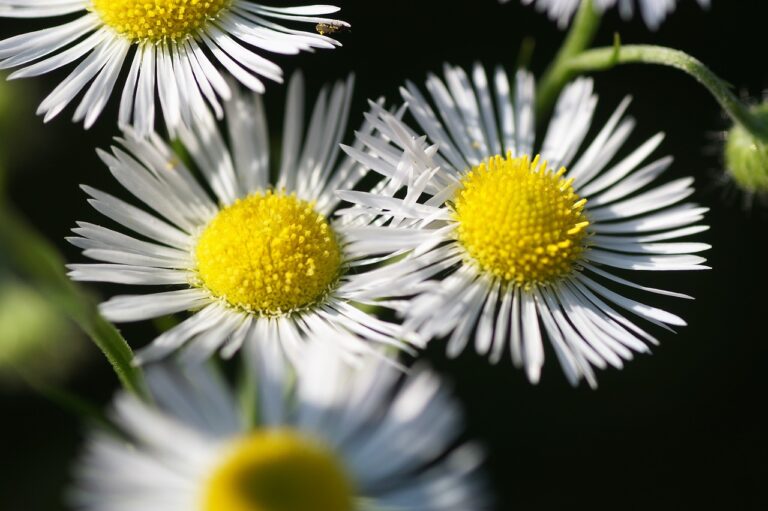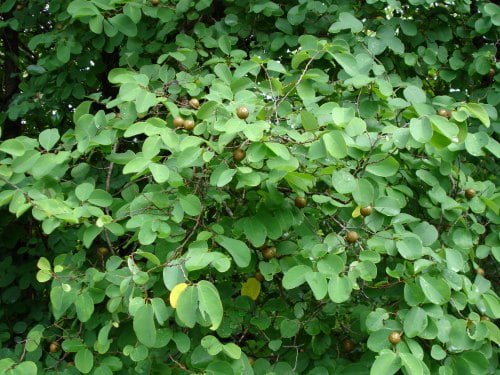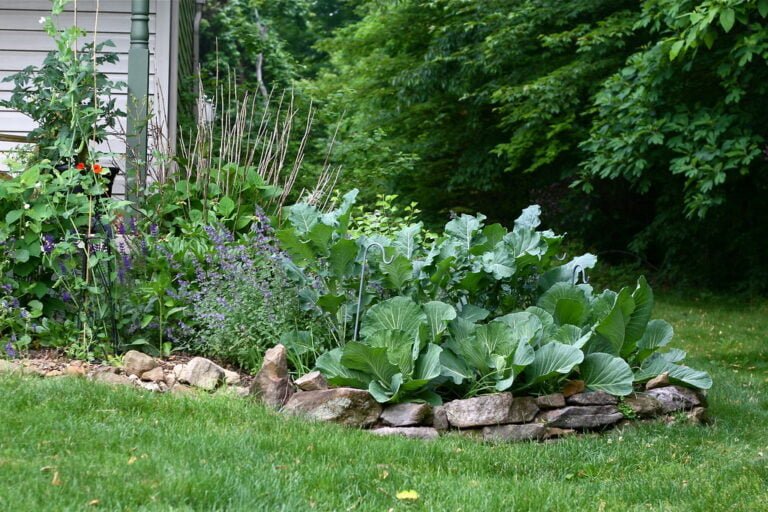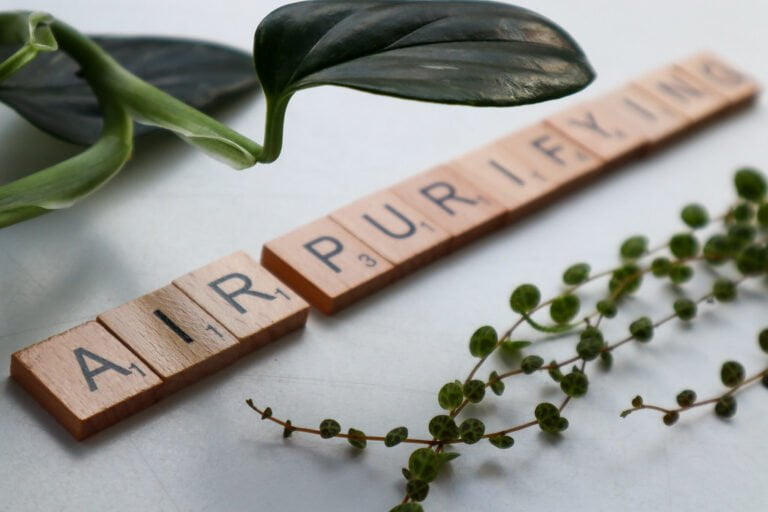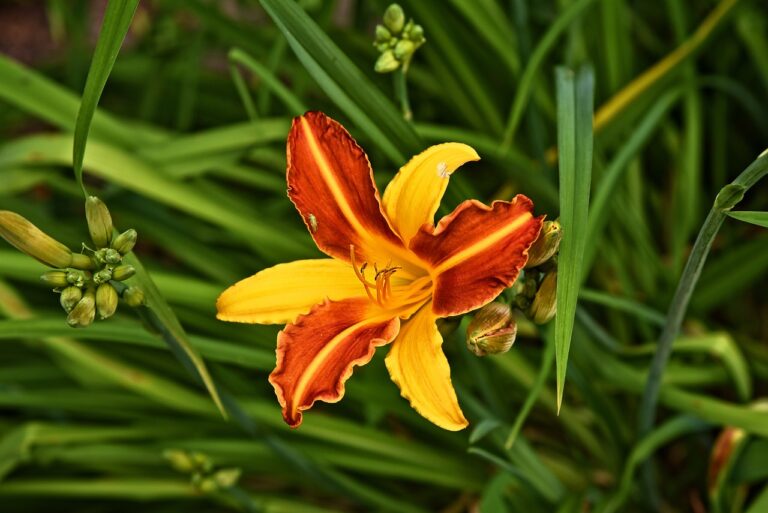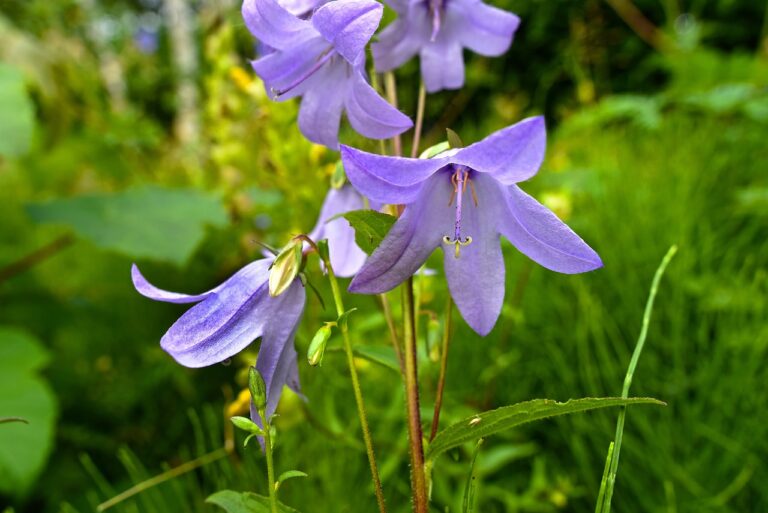Aromatic Plants
Hey there! Are you tired of your garden feeling a little lifeless? Well, I’ve got just the thing for you. How about adding some aromatic plants to your outdoor haven? These beauties not only bring a burst of fragrance to your garden but also create a wonderfully soothing and aromatic atmosphere in your home.
Imagine strolling through your backyard, surrounded by the delightful scents of lavender, rosemary, and other aromatic plants. It’s like walking through a fragrant wonderland! Not only will these plants make your garden smell amazing, but they also have practical uses too.
Lavender, for example, is known for its calming properties. It can help you relax after a long day and promote a good night’s sleep. Rosemary, on the other hand, not only smells divine but also adds flavor to your cooking. Just imagine stepping outside to snip some fresh rosemary for your dinner. Talk about a sensory experience!
So why not dive into the world of aromatic plants and take your surroundings to a whole new level? These plants will not only please your nose but also delight your guests. Trust me, they won’t be able to resist the intoxicating scents that fill the air.
Go ahead and give your garden and home that extra touch of magic with aromatic plants. Your senses will thank you, and you’ll wonder how you ever lived without them. Happy planting!
Key Characteristics
To understand the key characteristics of aromatic plants, you need to familiarize yourself with their distinct scents and therapeutic properties. Aromatic plants are widely used in aromatherapy due to their natural fragrances and health benefits. These plants contain essential oils that have been used for centuries to promote physical and emotional well-being.
One of the main uses of aromatic plants is in aromatherapy. The essential oils extracted from these plants are used in various ways, such as inhalation, massage, and diffusion. When inhaled, the scents of these plants can have a direct impact on the brain, affecting mood, emotions, and even memory. The therapeutic properties of these essential oils can also help alleviate stress, anxiety, and promote relaxation.
In addition to their uses in aromatherapy, aromatic plants offer a wide range of health benefits. Many of these plants have antimicrobial and anti-inflammatory properties, making them effective in treating skin disorders, respiratory issues, and even digestive problems. For example, lavender is known for its calming properties and can help reduce insomnia and anxiety. Eucalyptus, on the other hand, is commonly used to relieve congestion and improve respiratory function.
The distinct scents of aromatic plants not only have therapeutic properties but also provide a pleasant sensory experience. From the fresh and citrusy scent of lemon to the warm and woody aroma of sandalwood, each plant offers a unique fragrance that can uplift and rejuvenate the senses.
Life Cycle
As you explore the world of aromatic plants, understanding their life cycle is essential for cultivating and harnessing their therapeutic properties. The life cycle of aromatic plants consists of various stages, each playing a crucial role in the growth and development of these plants.
Propagation methods are used to initiate the life cycle, ensuring the successful reproduction and growth of aromatic plants. Propagation methods for aromatic plants vary depending on the specific plant species. Some common methods include seed propagation, where seeds are sown in suitable growing media and provided with adequate moisture and light conditions for germination. Other methods include vegetative propagation, which involves the use of cuttings or divisions from existing plants to create new ones. This method ensures that the new plants inherit the desirable traits of their parent plants.
Once the aromatic plants have been successfully propagated, they enter the growth phase. During this phase, the plants require optimal growing conditions such as proper sunlight, water, and nutrients to thrive. It’s important to monitor and maintain these conditions to support their growth and development.
Harvesting techniques are employed when the aromatic plants reach their desired stage of maturity. The timing of harvesting is critical, as it affects the concentration and quality of the aromatic compounds present. For some plants, the leaves, flowers, or stems are harvested, while for others, the entire plant is harvested. Careful handling and processing techniques are employed to preserve the delicate aromatic compounds and ensure their therapeutic properties are retained.
Understanding the life cycle of aromatic plants is vital for those who desire to serve others through the cultivation and use of these plants. By employing appropriate propagation methods and harvesting techniques, one can harness the full potential of aromatic plants and utilize their therapeutic properties effectively.
Habitat and Growing Conditions
You can create an ideal habitat and provide optimal growing conditions for aromatic plants to thrive and flourish. Proper soil requirements and pruning techniques are essential for the successful cultivation of these fragrant plants.
Aromatic plants have specific soil requirements to ensure their healthy growth. They prefer well-draining soil that’s rich in organic matter. This type of soil allows for proper root development and prevents waterlogging, which can lead to root rot. You can improve soil drainage by adding organic compost or sand, ensuring that the soil pH remains slightly acidic to neutral. Conducting a soil test can help you determine the specific nutrient needs of your aromatic plants, allowing you to amend the soil accordingly.
Pruning techniques also play a crucial role in maintaining the health and appearance of aromatic plants. Regular pruning helps promote bushier growth and increases the production of essential oils, which give these plants their delightful aromas. Start by removing any dead, damaged, or diseased branches. Then, prune back any overgrown or leggy stems to encourage new growth. When pruning, make clean cuts just above a leaf node or bud to stimulate new shoots. It’s essential to use clean, sharp tools to prevent the spread of diseases.
Popular Varieties
When selecting aromatic plants for your garden, consider the wide range of popular varieties available. These plants not only add a delightful fragrance to your garden, but they also have various uses in traditional medicine and culinary arts.
In traditional medicine, aromatic plants have been used for centuries due to their therapeutic properties. One popular variety is lavender (Lavandula spp.), known for its calming and relaxing effects. Lavender essential oil is often used to alleviate anxiety and promote better sleep. Another commonly used plant is peppermint (Mentha x piperita), which is known for its cooling and soothing properties. Peppermint tea is often used to relieve digestive discomfort and headaches. Rosemary (Rosmarinus officinalis) is another versatile herb used in traditional medicine. It has been used to improve memory and concentration, as well as to relieve muscle pain and stimulate hair growth.
In the culinary arts, aromatic plants are essential for adding flavor and aroma to dishes. Basil (Ocimum basilicum) is a popular herb used in various cuisines around the world. Its fresh and sweet aroma enhances the taste of tomato-based dishes, salads, and even desserts. Another well-known herb is thyme (Thymus vulgaris), which has a strong and earthy flavor. It’s often used in stews, soups, and roasted meats. Additionally, lemongrass (Cymbopogon citratus) is widely used in Asian cuisine for its citrusy and refreshing flavor. It adds a unique touch to curries, stir-fries, and teas.
When selecting aromatic plants for your garden, consider their uses in both traditional medicine and culinary arts. Not only will they provide a pleasant fragrance, but they’ll also serve a practical purpose in your everyday life.
Cultivation and Care
To successfully cultivate and care for aromatic plants, it is important to provide them with the proper growing conditions and regular maintenance. Aromatic plants require specific care to thrive and reach their full potential. Here are some essential tips to ensure the well-being of your aromatic plants:
Growing Conditions
| Aspect | Light | Soil |
|---|---|---|
| Full sun | 6-8 hours | Well-draining, fertile soil |
| South-facing exposure | Rich in organic matter |
Aromatic plants thrive in full sun, so it is crucial to choose a location that receives at least 6-8 hours of direct sunlight each day. South-facing exposures are especially beneficial for their growth. The soil should be well-draining and fertile, rich in organic matter. Proper soil preparation, including amending with compost or well-rotted manure, will provide the necessary nutrients for healthy growth.
Regular Maintenance
| Watering | Pruning | Pest Control |
|---|---|---|
| Moderate | Regular | Natural remedies |
| Avoid overwatering | Monitor for pests |
Aromatic plants require moderate watering, and it is essential to avoid overwatering, as excessive moisture can lead to root rot. Regular pruning is necessary to maintain their shape, promote bushier growth, and improve air circulation. Pruning techniques vary depending on the plant, but generally involve removing dead or damaged branches and shaping the plant. When it comes to pest control, it is recommended to use natural remedies to avoid harmful chemicals. Regularly monitor the plants for signs of pests and take appropriate measures if an infestation occurs.
Following these cultivation and care guidelines will help you provide the optimal conditions for your aromatic plants to thrive. With proper maintenance and attention, you will enjoy the aromatic scents and beauty of these plants for years to come.
Landscaping and Design
One important aspect of landscaping and design with aromatic plants is choosing the right varieties for your garden. When it comes to designing your garden with aromatic plants, it’s essential to consider design principles that will enhance the overall aesthetic appeal and functionality of your outdoor space. Sustainable landscaping practices should also be incorporated to ensure that your garden is environmentally friendly and low-maintenance.
Here are some key points to consider when designing your garden with aromatic plants:
- Design Principles:
- Balance: Ensure a harmonious distribution of aromatic plants throughout your garden, taking into account their height, color, and texture.
- Unity: Create a cohesive design by selecting aromatic plants that complement each other and the overall theme of your garden.
- Focal Points: Use aromatic plants as focal points to draw attention and create visual interest in your garden.
- Proportion: Consider the size of your garden and select aromatic plants that fit well in the available space.
- Rhythm: Use repetition and variation of aromatic plants to create a sense of movement and flow in your garden.
- Sustainable Landscaping:
- Native Plants: Choose aromatic plants that are native to your region as they’re adapted to the local climate and require less water and maintenance.
- Water Conservation: Incorporate water-efficient irrigation systems and practices to minimize water usage in your garden.
- Organic Practices: Avoid the use of synthetic fertilizers and pesticides, and opt for organic alternatives to promote a healthy and sustainable garden ecosystem.
- Mulching: Apply organic mulch around aromatic plants to conserve moisture, suppress weeds, and improve soil health.
Common Issues and Solutions
If you encounter common issues with aromatic plants in your garden, there are effective solutions available. When it comes to pest control, it’s crucial to identify the specific pests affecting your plants. Common pests that can attack aromatic plants include aphids, spider mites, and whiteflies. To combat these pests, you can use natural remedies such as insecticidal soaps or neem oil. These products are safe for the environment and will effectively control the pests without harming your plants or beneficial insects.
Another common issue with aromatic plants is harvesting techniques. To ensure the best quality and flavor of your harvested herbs, it’s essential to harvest them at the right time. Each herb has its own optimal harvesting time, which is usually when the plant is in full bloom but before it starts to decline. When harvesting, make sure to use clean and sharp pruners to avoid damaging the plant. It’s also recommended to harvest in the morning when the essential oils in the herbs are at their peak.
Proper storage is also crucial to maintain the quality of your harvested aromatic plants. After harvesting, gently wash the herbs to remove any dirt or debris, then pat them dry with a clean towel. You can store the herbs in airtight containers, such as glass jars, and keep them in a cool, dark place. This will help preserve the flavor and aroma of the herbs for a longer period.
Practical Uses
Discover the many practical uses of aromatic plants in your everyday life. Aromatic plants have been used for centuries for their medicinal properties and culinary applications. These plants not only add fragrance and flavor to your dishes, but they also offer a wide range of health benefits.
Medicinal Properties:
- Aromatic plants such as lavender, chamomile, and peppermint have been used in traditional medicine for their calming and soothing properties. Lavender, for example, is known for its ability to promote relaxation and relieve stress. Chamomile is often used to treat digestive issues and promote sleep. Peppermint is known for its ability to alleviate headaches and aid digestion.
Culinary Applications:
- Aromatic plants like basil, rosemary, and thyme are commonly used in cooking to enhance the flavor of dishes. Basil adds a fresh and aromatic taste to pasta sauces and salads. Rosemary pairs well with roasted meats and vegetables, adding a savory and earthy flavor. Thyme is often used in soups, stews, and marinades, providing a subtle and fragrant taste.
These aromatic plants not only elevate the taste of your meals, but they also offer potential health benefits. For example, basil contains antioxidants that may help reduce inflammation and protect against certain diseases. Rosemary has been shown to have antibacterial properties, while thyme is rich in vitamins and minerals that support overall health.
Incorporating aromatic plants into your everyday life can’t only enhance your culinary experiences but also provide you with potential health benefits. Whether you use them in cooking or enjoy their soothing aromas in essential oils or herbal teas, these plants can be a valuable addition to your daily routine.
Frequently Asked Questions
Can Aromatic Plants Be Grown Indoors?
Yes, you can successfully grow aromatic plants indoors. Having indoor aromatic plants has numerous benefits for aromatherapy.
These plants release essential oils that can promote relaxation, reduce stress, and improve overall well-being.
To grow aromatic plants in small indoor spaces, ensure they receive sufficient sunlight, which can be supplemented with grow lights if necessary. Use well-draining soil and water the plants regularly, but avoid overwatering. Prune the plants regularly to maintain their shape and promote healthy growth.
How Can I Harvest and Store Aromatic Plants for Future Use?
To harvest and store aromatic plants for future use, you must employ precise techniques and methods.
First, carefully choose the optimal time to harvest, when the essential oils are at their peak.
Then, employ various harvesting techniques such as handpicking or cutting the stems.
Next, employ drying methods like air drying or using a dehydrator to preserve the potency of the plants.
Are There Any Specific Companion Plants That Can Be Grown Alongside Aromatic Plants?
When it comes to growing aromatic plants, you might wonder if there are any specific companion plants that can be grown alongside them. Companion planting benefits both plants by enhancing growth, deterring pests, and attracting beneficial insects.
The best companion plants for aromatic plants can vary depending on the specific plant, but some popular choices include marigolds, basil, and lavender. These companion plants not only provide a visually appealing garden, but also help to improve the overall health and productivity of the aromatic plants.
Do Aromatic Plants Attract Any Beneficial Insects or Repel Pests?
Aromatic plants play a vital role in creating a healthy ecosystem and attracting beneficial insects while repelling pests. They’re like nature’s little helpers, working tirelessly to maintain a balanced garden.
The enticing scents emitted by these plants act as a magnet for pollinators such as bees and butterflies, ensuring the successful reproduction of many plant species.
Additionally, the strong aromas act as a natural deterrent, keeping harmful pests at bay.
Can Aromatic Plants Be Used for Making Natural Dyes or Homemade Beauty Products?
Using aromatic plants in your natural skincare routine offers numerous benefits. These plants contain essential oils that can nourish and rejuvenate your skin.
You can easily make homemade beauty products using aromatic plants, such as lavender-infused face masks or rosemary-infused body scrubs. These DIY recipes aren’t only natural and chemical-free, but they also provide wonderful aromatherapy benefits.
Incorporating aromatic plants into your beauty routine is a great way to care for your skin while indulging in the soothing scents of nature.
Conclusion
In conclusion, aromatic plants are a delightful addition to any garden or landscape. Their unique scents and vibrant colors create a sensory experience that’s both invigorating and soothing.
By following proper cultivation and care techniques, these plants can thrive and bring joy for years to come. So why not add a touch of nature’s beauty to your surroundings and indulge in the aromatic wonders they offer?
Your senses will thank you!

